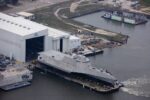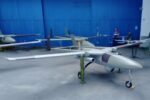Amid growing threats from GNSS jamming and spoofing on the modern battlefield, Australian firm Advanced Navigation has launched a new line of electronic protection systems aimed at ensuring resilient positioning, navigation and timing (PNT) for military platforms. The company’s Electronic Protection Range (EPR), unveiled in October 2025, offers modular solutions that integrate anti-jam antennas and inertial navigation technologies to safeguard critical systems operating in contested electromagnetic environments.
GNSS Vulnerabilities Drive Demand for Assured PNT
Global Navigation Satellite Systems (GNSS)—such as GPS (USA), Galileo (EU), GLONASS (Russia), and BeiDou (China)—are foundational to modern military operations. However, their signals are inherently weak and susceptible to disruption through jamming or manipulation via spoofing. Adversaries including Russia and China have demonstrated sophisticated capabilities in this domain across Ukraine, the South China Sea, and elsewhere.
As reliance on GNSS increases across unmanned systems, precision-guided munitions, C4ISR platforms and logistics chains, so does the risk of operational paralysis if these signals are denied or corrupted. In response to this threat landscape—and aligned with NATO’s Assured PNT initiatives—defense forces are prioritizing resilient alternatives that can operate independently or augment GNSS-based solutions.
Overview of Advanced Navigation’s Electronic Protection Range
The new Electronic Protection Range from Advanced Navigation comprises three core offerings:
- Anti-Jam Antenna System: A multi-element controlled reception pattern antenna (CRPA) designed to suppress interfering signals while maintaining satellite visibility. Compatible with GPS L1/L2/L5 bands as well as Galileo E1/E5a/E5b.
- Inertial Navigation System (INS): Based on fiber-optic gyroscopes (FOG) or MEMS technology depending on configuration. Provides dead-reckoning capability when GNSS is denied.
- PNT Fusion Engine: Software-defined module that fuses inputs from INS, barometric altimeters, magnetometers and other sensors to deliver robust positioning data even during prolonged GNSS outages.
The range is designed with modularity in mind—allowing integration into ground vehicles, UAS/UAVs, naval vessels or dismounted soldier kits depending on mission requirements. All components are ITAR-free and manufactured in Australia under sovereign capability frameworks supported by the Australian Department of Defence.
Applications Across Air-Land-Sea Domains
The EPR is tailored for multi-domain operations where electromagnetic interference is prevalent. Key use cases include:
- Dismounted Infantry: Lightweight INS modules provide soldiers with location tracking even when GPS is jammed indoors or underground.
- Tactical UAVs: Anti-spoofing capabilities ensure autonomous drones maintain course integrity during ISR missions over hostile terrain.
- Armored Vehicles: CRPA antennas protect vehicle-mounted C4ISR nodes from RF interference during maneuver warfare.
- Naval Platforms: Maritime variants support navigation continuity during electronic warfare scenarios at sea.
This aligns with emerging doctrines emphasizing “navigation warfare” readiness—particularly among Five Eyes nations seeking greater resilience against near-peer adversaries’ EW toolkits.
Sovereign Capability & Export Potential
The development of the EPR underscores Australia’s growing ambition to become a regional hub for advanced defense technologies. Advanced Navigation has emphasized that its solutions are ITAR-free—meaning they can be exported without U.S. State Department restrictions—a key differentiator in Asia-Pacific markets wary of foreign dependency or regulatory bottlenecks.
The company already supplies inertial systems for AUVs used by navies globally and has partnered with Thales Australia and BAE Systems on previous programs. Its new EPR line could be positioned as a complementary offering within larger C4ISR modernization efforts or integrated into NATO-aligned platform upgrades seeking hardened PNT capabilities without full system redesigns.
Pacing the Threat: Counter-Spoofing as a Strategic Imperative
The launch comes amid heightened concern over real-world incidents involving GNSS interference:
- NATO aircraft operating near Kaliningrad have reported GPS anomalies attributed to Russian spoofing equipment like Tobol-M complexes.
- Civil aviation disruptions over Iraq and Iran have been linked to regional actors testing EW payloads capable of manipulating satellite signals over wide areas.
- The war in Ukraine has seen extensive use of mobile jammers like R-330Zh “Zhitel” targeting Ukrainian UAVs reliant on civilian-grade GPS modules.
This operational context reinforces why assured PNT is now viewed not just as a technical feature—but a strategic necessity underpinning force survivability and decision dominance. Solutions like those offered by Advanced Navigation contribute directly to hardening this digital backbone against adversary action.
Looking Ahead: Integration into Future Force Architectures
The next phase for technologies like the EPR will be seamless integration into broader command-and-control ecosystems—leveraging AI-driven sensor fusion engines that adaptively switch between data sources based on signal integrity assessments. This would allow future platforms—from loitering munitions to autonomous UGVs—to navigate confidently even inside dense urban canyons or under heavy EW attack without human intervention or external comms links.
If adopted widely across allied forces’ inventories—including via programs such as Australia’s LAND 125 Phase 4 soldier modernization effort—the EPR could serve as a building block toward truly resilient warfighting networks capable of surviving first-contact disruptions in high-end conflict scenarios.










